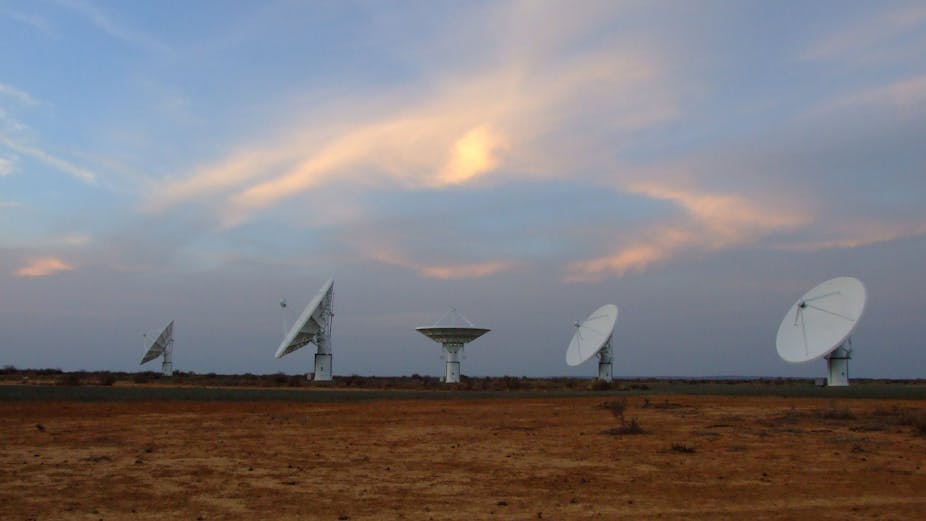And so, the universe can breathe again. After a meeting of members at Amsterdam’s Schiphol airport last night (AEST), the International SKA Organisation has announced that the world’s largest radio telescope – the Square Kilometre Array (SKA) - will be shared between two sites: one in South Africa and the other in Western Australia.
Given the intense media speculation surrounding the site decision in recent months, the news of a split site won’t come as a surprise to many.
After the SKA Site Advisory Committee found that South Africa and Australia would both be suitable for building the connected network of several thousand radio telescopes, a site options working group was set up to investigate the viability of a more inclusive approach to the construction of SKA.
Throughout this process, it became increasingly clear that there were significant scientific advantages to leveraging existing infrastructure and expertise developed through the SKA pathfinder projects in South Africa (MeerKAT) and Australia (CSIRO’s SKA pathfinder telescope).
The SKA site announcement is the culmination of intense toil by scientists around the world, who have thought long and hard about the options. The solution they arrived at was to split the SKA along broadly scientific lines.
More specifically, the South African telescopes will be optimised to study the fundamental nature of gravity and to make detailed images of individual objects.
The Australasian instruments on the other hand will research the composition of the universe (including mysterious dark matter and dark energy) and its history through large surveys.
To this end, the African site will have many satellite dishes to detect weak signals from distant galaxies. It will also feature cutting-edge all-sky radio receivers covering the mid-frequency range (200-500MHz).
The Australasian array will use wide-field radio receivers to carry out large-area surveys of hundreds of millions of galaxies. Low-frequency technologies will also be deployed in Australasia to study the environment in which the very first stars and galaxies were born.
Thus the SKA project has two complementary parts. Each of these fulfils a different role but together, they tackle all the big questions that astronomers aim to answer about our universe.

In making use of existing SKA infrastructure, it will be possible to focus on the technological developments that will be required to make the SKA a transformational scientific instrument. These include “phased array feeds” – cutting-edge radio receivers being developed by CSIRO and others - that enable wide-angle surveys of the sky and open a whole new window to the universe.
Not only are these receivers assisting astronomers in their surveys of the universe but they also show promise in other fields such as medical imaging. Researchers are already investigating whether this technology could be used to improve the rate of early detection of cancerous tumours.

A split-site agreement might not be the fairytale ending some observers might have been hoping for. But in pursuing an inclusive approach to developing the world-leading radio telescope, the International SKA Organisation has made a wise choice under difficult circumstances.
In these uncertain economic times it makes financial sense to leverage the considerable existing investment in radio astronomy that has been made by the governments on both continents, using this as a springboard to realising the SKA’s full scientific vision.
The split-site agreement is thanks to a successful negotiation between the eight member countries. This spirit of collaboration and compromise may prove key to the future success of the project, both in retaining current member countries and attracting new talent and investment.
The details of this plan will require considerable work and alterations will inevitably be made to the existing project timeline. Broadly, we can expect a three to four year detailed design phase, followed by the construction of infrastructure for the first phase of the project (approximately 10% of the full instrument).
All going well, we should expect a roll-out of the full instrument in the mid 2020s. I for one can’t wait!
Further reading:
- Splitting the SKA - why a dual-site setup is a win for everyone - Bryan Gaensler

